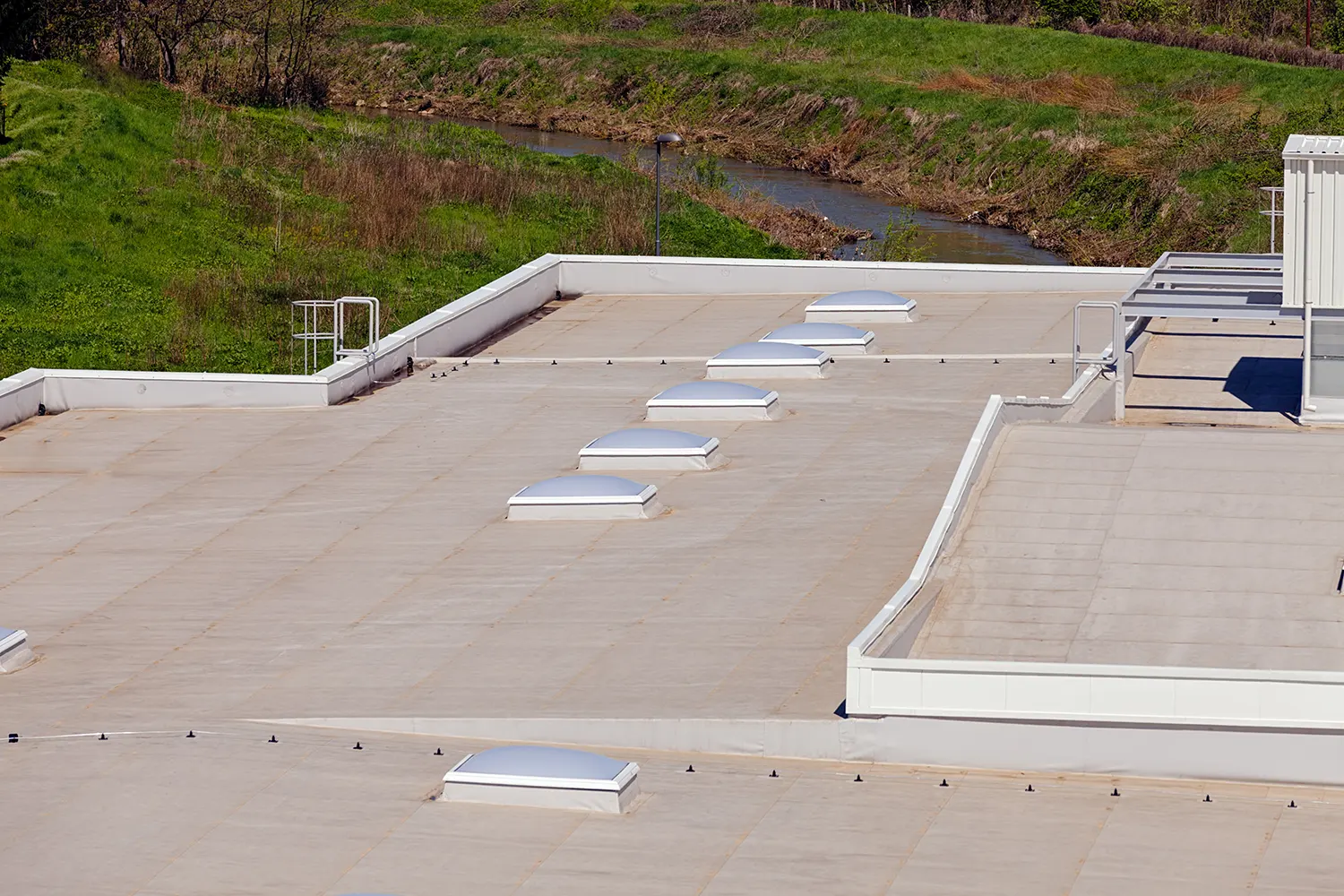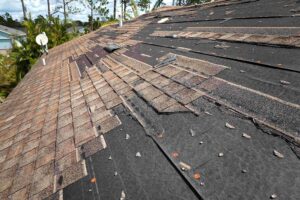When it comes to commercial roofing, one of the most common materials used today is TPO (Thermoplastic Polyolefin). Known for its energy efficiency, durability, and cost-effectiveness, TPO is a popular choice for flat and low-slope commercial roofs. But if you’re a building owner or property manager considering a TPO roofing system, one of the biggest decisions you’ll face is how it’s installed: mechanically attached vs. fully adhered.
As a trusted commercial roofing contractor in Texas, we at NewRüf want to help you make the most informed choice possible. Here’s a breakdown of key differences, pros and cons, and why NDL warranties matter for your peace of mind.
Mechanically Attached vs. Fully Adhered TPO: What’s the Difference?
Mechanically Attached TPO Roofing
In a mechanically attached TPO roof, the membrane is secured to the roof deck using fasteners and plates that are typically spaced in rows every 5 to 10 feet. The seams are then heat-welded.
Pros:
- Lower initial installation cost
- Faster installation process
Cons:
- Visible seams every 10 feet can make the roof look less clean
- More susceptible to wind uplift and wrinkling
- Can be noisier in windy areas due to membrane movement
- Less aesthetically pleasing, especially for buildings with high visibility
Fully Adhered TPO Roofing
With a fully adhered TPO roof, the membrane is glued directly to the substrate using a high-strength adhesive. The seams are still heat-welded, but the membrane itself lays flat and tight across the entire surface.
Pros:
- Superior wind uplift resistance
- Cleaner, smoother appearance
- Reduces chances of membrane fluttering and long-term wear
- Better aesthetics—no wrinkling or raised seams
- Ideal for high-rise buildings or areas with high wind exposure
Cons:
- Higher material and labor cost, mainly due to the adhesive
- Slower installation due to curing and drying times
As the owner of NewRüf puts it: “I don’t like mechanically attached TPO roofs because they look ugly to me… When wind blows over a flat roof, it causes negative pressure and can lift the membrane up. When it’s fully adhered, that doesn’t happen. It just looks better and performs better—even if it’s more expensive.”
Why NDL Warranties Matter in Commercial Roofing
Another key decision is whether to opt for a No Dollar Limit (NDL) warranty on your TPO roof. At NewRüf, we always recommend going with the NDL warranty—because it’s not just a piece of paper; it’s real protection for your investment.
What is an NDL Warranty?
An NDL warranty is issued by the TPO membrane manufacturer and typically covers both labor and materials, regardless of the total cost of repairs.
Key Benefits:
- Covers the full cost of roof repairs, even if materials or labor prices increase
- Protects you beyond the contractor’s warranty period (usually two years)
- Backed by the manufacturer, which is ideal in case your contractor goes out of business
- Offers long-term peace of mind for building owners and property managers
As our owner explains: “An NDL warranty means there’s a huge company behind your roof—it’s not just me on the hook. What happens if I get hit by a bus? This way, you’re still protected.”
Parapet Wall Detail: The Finishing Touch That Matters
Another design consideration that’s often overlooked is how the membrane is terminated at parapet walls. Some contractors will stop at the wall and seal the membrane with a termination bar and sealant, but that approach has its downsides.
Why We Prefer Going Up and Over the Parapet:
- Eliminates long-term maintenance issues with failing caulk
- Creates a cleaner, more aesthetically pleasing edge
- Offers a more secure seal, especially with a two-piece metal coping cap
“The best way is to go up and over the parapet wall and use a two-piece detail. It not only seals better, it looks finished—way better than just a termination bar and caulking.”
Final Thoughts: Invest in Performance, Not Just Price
Choosing the right TPO roof installation method can make a big difference in how your commercial roof looks, performs, and lasts over time. While a fully adhered TPO roof comes with a higher upfront cost due to adhesive and labor, it pays off in performance, aesthetics, and long-term durability.
Likewise, opting for an NDL warranty ensures that your investment is protected by the manufacturer—not just your roofer—giving you total peace of mind.
Ready to Upgrade Your Commercial Roof?
Whether you need a roof replacement, repair, or a brand-new TPO system, NewRüf is your local expert in commercial roofing across Texas. We’ll walk you through your options, including fully adhered vs. mechanically attached TPO, and help you choose the best warranty coverage for your building.
Contact us today to schedule your free roof assessment, or learn more about our commercial roofing services.





